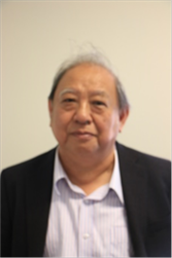Strong Metal Support Interaction (SMSI) in Catalysis:The Oxidative Case
SEMINAR
The State Key Lab of
High Performance Ceramics and Superfine Microstructure Shanghai Institute of Ceramics, Chinese Academy of Sciences
中 国 科 学 院 上 海 硅 酸 盐 研 究 所 高 性 能 陶 瓷 和 超 微 结 构 国 家 重 点 实 验 室

Strong Metal Support Interaction (SMSI) in Catalysis: The Oxidative Case
牟中原
台湾大学化学系
时间:2019 年 3 月 4 日(星期一)上午 9:30
地点:长宁园区2号楼 607会议室
欢迎广大科研人员和研究生参与讨论!
联系人:施剑林,陈航榕(52412712,52415305)
报告摘要:
Highly dispersed supported gold with strong metal support interaction is a desirable material for heterogeneous catalysis. Unlike current dispersion strategies of depositing gold from solution to support, we found a new method of producing highly dispersed gold clusters on ZnO mesocrystal. The gold clusters appeared on defect-rich twin-brush ZnO mesocrystals (TB-ZnO) via in-and-out process: (i) a mixed Au/Zn oxide was formed first after precipitation-deposition of Au with AuCl4-, (ii) Fine Au clusters grow from the underneath to surface of the oxide after heating. The TB-ZnO behaved like a sponge allowing gold atoms heavily dispersed into the wurtzite structure of ZnO with Zn-substitution by gold. After mild thermal treatment, the embedded gold emerged from the underneath of ZnO support to form highly dispersed Au nanoparticles of ~2 nm on ZnO surface. DFT calculation shows energetically favored Au-doping in TB-ZnO and facile defect-mediated migration of Au in it. The material (Au/TB-ZnO) gave outstanding activities for the catalysis of CO oxidation. The use of mesocrystals of metal oxide as supports, with rich vacancy defects, provides a new route for preparing highly dispersed and active supported metal catalysts. Further comparison with Au nanoparticle supported on ZnO nanorod, where less defects exist, will be made.
报告人简介:
 牟中原教授,1950年生于台湾基隆市,现任国立台湾大学化学系教授。牟教授1970年于国立台湾大学化学系获得学士学位,1975年于美国华盛顿大学获得化学博士学位。1975-1977年在美国奥勒冈大学进行博士后研究,1978年开始进入台湾大学化学系分别任副教授、教授,其中2004-2007年任台湾大学化学系主任,2014年任台湾大学讲座教授。1991年开始任天下文还出版顾问,2012-2014年任国家科学委员会副主任委员,2016年任亚洲太平洋催化联盟主席。
牟中原教授,1950年生于台湾基隆市,现任国立台湾大学化学系教授。牟教授1970年于国立台湾大学化学系获得学士学位,1975年于美国华盛顿大学获得化学博士学位。1975-1977年在美国奥勒冈大学进行博士后研究,1978年开始进入台湾大学化学系分别任副教授、教授,其中2004-2007年任台湾大学化学系主任,2014年任台湾大学讲座教授。1991年开始任天下文还出版顾问,2012-2014年任国家科学委员会副主任委员,2016年任亚洲太平洋催化联盟主席。
牟中原教授发表了400余篇SCI科技论文,H因子为76。他2007年获得美国科学院Gazzelli奖;2008年获得有庠科技讲座;2013年获得世界科学院(TWAS)化学奖;2016年成为中央科学院院士。


 当前位置:
当前位置:

